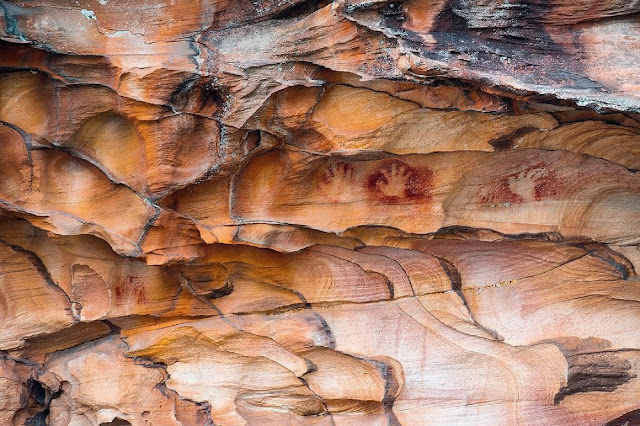While not completely out
of Sydney, I am, however, on its outskirts, visiting the third oldest
Australian national park. Established in 1894, Ku-ring-gai Chase National Park
is beautifully located south of the Hawkesbury River. The park is a wonderful
display of untouched bushland, sheltered coves, and sparkling blue water views.
Ku-ring-gai’s plant life
is quite diverse, with more than 1000 species recorded. It features low,
shrubby heathland, eucalypt trees such as Sydney peppermint and red bloodwood,
whose sap was used in traditional medicine to heal open wounds, burns and sores.
The small area of rainforest includes the dense, glossy-leaved Lilly Pilly, an
evergreen tree with pink summer flowers and edible winter fruit. The fruit
varies from tart to sweet, and its high acid content makes it a perfect
candidate for homemade jams or preserves.
A quirky eucalypt tree
found in the park is the scribbly gum, so-called because of the scribbles found
on its smooth trunk made by moth larvae. The moth grub tunnels between the old
and new bark, and as the old bark sheds, the new marks appear. The trunk of the
tree was often used by Aboriginal people to make coolamons (vessels) or, in
Wiradjuri, known as guliman. The coolamons were vessels used to carry water or
collect bush tucker, like fruit and nuts. Cuts were typically made on the south
side to minimise stress on the tree, as evidenced by the scars on the tree. The
tree's usefulness extends further by providing a home in its hollows and nectar
from its flowers to possums, flying foxes, owls and parrots.
There is no shortage of
wildlife in the park, but many are shy, nocturnal creatures like possums,
gliders, bandicoots and swamp wallabies. Then there’s the common bent-wing bat
that managed to colonise itself over the last 15,000 years from southern Europe
to Asia, Africa and all the way south to Australia. More than 100 species of
butterflies inhabit the park, with beauties like the Delias nigrina (common
Jezebel) with white and black-tipped topside and a black, yellow and red
underside.
The park is on the
traditional lands of the Guringai Nation, from which the name is taken. A very
important place is the Red Hands Cave at the park's northern tip. It provides
physical evidence of their ancestors through a red handprint on the rock, engravings
in the soft sandstone on the ground by the Garigal people of the Gurangai
Nation, and a spiritual connection to their past.
Ku-rang-gai was vast, with many tracks through the bush, some leading to secluded beaches or expansive views of the central coast. From the highest point on the Willunga Track, the outline of Sydney and the suburb of Chatswood was visible to the south.










No comments:
Post a Comment
It's so good to see you here . . .